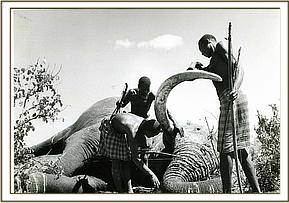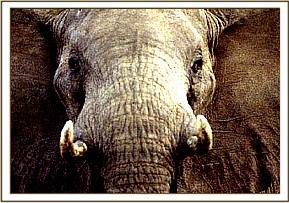Today, 22 March 2010, CITES rejected a proposal from Tanzania calling for an easing of the international ban on ivory sales to permit one off sales of some 90 tons of ivory! Following this rejection, Zambia, which itself had sought permission for the one off sale of some 20 tons of ivory, withdrew its proposal


In 1989 CITES imposed a complete ban on ivory sales, following the widespread slaughter of elephants during the previous ten years, when in excess of 700,000 elephants were murdered for their tusks – over half the population at the time. Illegal ivory trafficking continued, however elephant deaths were far fewer and in many areas population number began to increase a little – the elephants had been given a stay of execution.
Just ten years on and CITES approved a so-called one off sale of ivory, which raised some $5m for apparent conservation projects. Just 3 years after that, in 2002, CITES agreed in principle to another of these so called one off sales and in 2007 it approved that decision for South Africa, Botswana, Namibia and Zimbabwe to sell their stockpiled ivory to China and Japan. The four African Nations argued they could better protect their elephants by raising funds for their conservation through the sale of their body parts - their ivory. CITES justified its decision to allow the sales, stating that they would help satisfy the growing demand for ivory in China, Japan and the Middle East.
The decision opened the floodgates for illegal ivory trading. With legalised sales providing a smokescreen for illegal ivory and in doing so, stimulating ivory poaching and an increase of the market for ivory products. As recently as 27 February, customs officials in Thailand seized 239 tusks, weighing almost 2 tonnes, reportedly the countries biggest ever seizure. While in September 2009 the Kenya Wildlife Service made its biggest seizure in recent times, amounting to over a tonne of ivory. The value of ivory has risen seven fold since the legalised sales of 2008, with a poacher, usually living on less than a dollar a day now able to command a price of over $50 a kilo, while the end seller is getting closer to $1,500 a kilo.
‘Now, more than ever, when the elephants are so very vulnerable, their social family fabric torn to tatters, should the world SAY NO TO IVORY, no matter in what form. Each and every one of us can, and should, at least do that. Every piece of ivory is a haunting memory of a once proud and majestic animal, that should have lived three score years and ten; who has loved and been loved, and was once a member of a close-knit family akin to our own; but who has suffered and died in unspeakable agony to yield a tooth for a trinket. Something so symbolic of death and suffering can never be beautiful,’ 